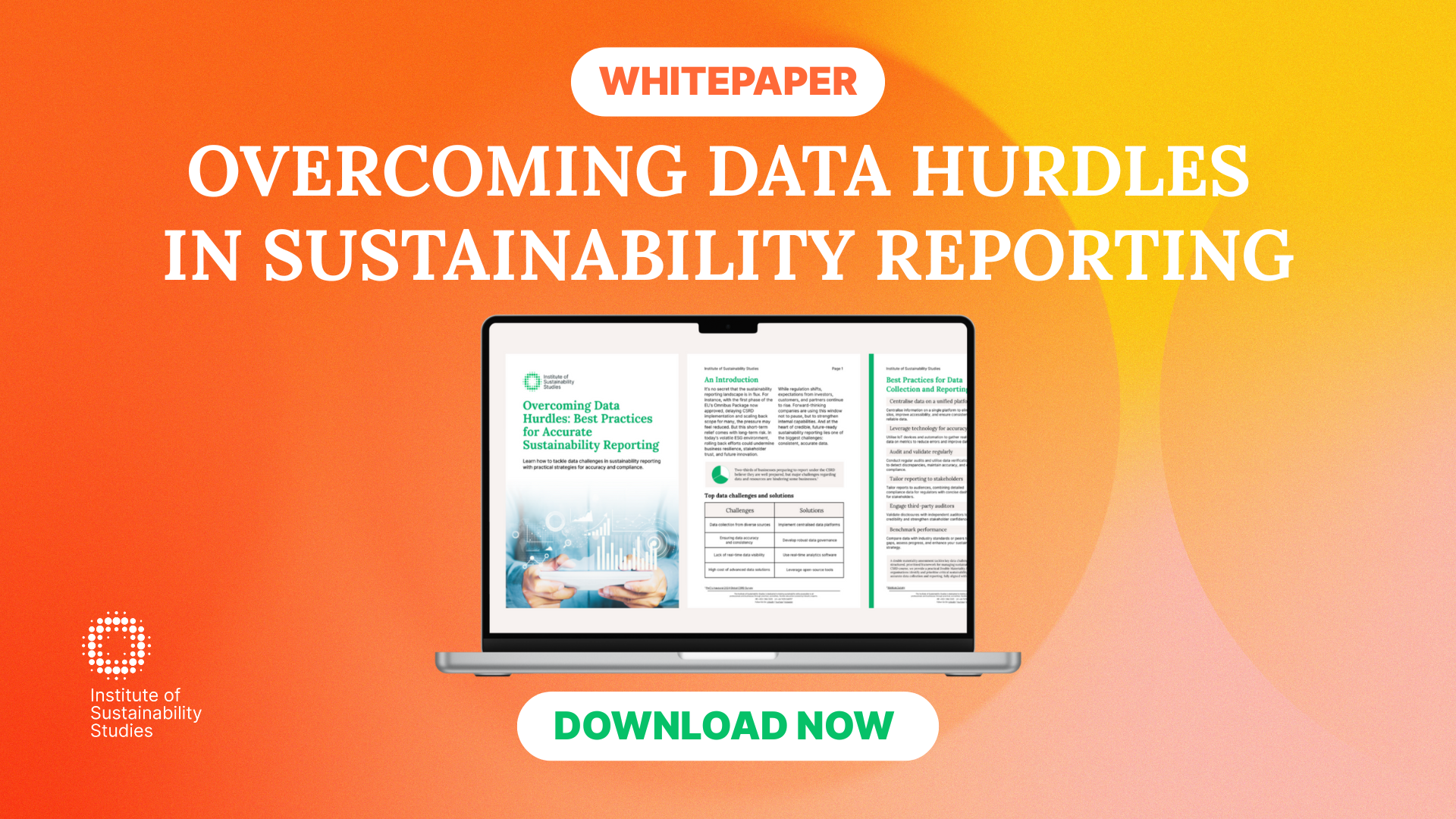Sustainable product design is an integral aspect of business sustainability, focused on developing products that minimise environmental and societal impacts throughout their life cycle. Sustainable product innovation is increasingly critical as businesses and consumers alike become more conscious of their ecological footprints.
With estimations that 80 percent of the environmental impacts of products are linked to decisions made at the design stage, sustainable product design is a business imperative. Let’s delve into the key principles of sustainable product design, examining their significance and implementation across various industries.
Key principles of sustainable product innovation
Sustainable product design is centred on creating products that have a minimal negative impact on the environment and society throughout their life cycle. Below are the key principles of sustainable product design.
Resource efficiency
Resource efficiency is a primary principle of sustainable product design in terms of both material selection and energy efficiency. This means using recycled, renewable, or eco-friendly materials and designing products that require less energy to manufacture and operate.
Life cycle thinking
Life cycle thinking is another important component of sustainable product design. This involves adopting a cradle-to-cradle design approach. What this means is that producers create products that can be fully reclaimed or recycled after their useful life, driving the circular economy. Similarly, within this principle, products should also be designed to last longer so as to reduce the need for frequent replacements.
Minimising environmental impact
It should come as no surprise that curbing environmental impact is one of the key principles of sustainable product design. This is achieved in a multitude of ways but mainly through low-emission production and waste reduction. In other words, producers utilise manufacturing processes that produce minimal greenhouse gas emissions and pollution. Additionally, they design products to curb waste during production and end-of-life disposal.
Eco-friendly manufacturing
Sustainable product innovation involves harnessing sustainable manufacturing processes. This entails implementing techniques designed to reduce energy consumption, water use, and chemical pollution. Moreover, manufacturers avail of local sourcing whereby they source components and materials locally to support local economies and curb transportation emissions.
Design for disassembly
Sustainable product innovation sees producers design products so that they can be easily dissembled into their component parts for reuse or recycling. Similarly, products are created with modular components that can be replaced or upgraded individually which extends the product’s life and reduces waste.
Ethical considerations
A pivotal component of sustainable product innovation is ensuring fair labour practices and social responsibility. For instance, producers ensure that the manufacturing process adheres to fair labour practices and that workers are treated ethically.
The overproduction of clothing, for example, contributes to the exploitation of garment workers. This is because workers must work under immense pressure to fill high quantities of clothing. Under this umbrella, producers also consider the social impact of the products they make such as how they impact communities and societies throughout their life cycle.
Impact across industries
Sustainable product innovation can have a significant impact across various industries, including fashion, technology, automotive, and consumer goods. Below are the key potential impacts across several sectors.
Fashion
The use of organic cotton, recycled polyester, and other sustainable materials reduces the environmental impact of clothing production. Innovations such as waterless dyeing techniques and energy-efficient manufacturing processes significantly cut down on resource use.
In addition, many brands have adopted circular business models, such as clothing rental, resale, and recycling programmes, minimising waste and extending the life of garments. Some fashion companies are also creating new products from discarded materials reducing the amount of textile waste that ends up in landfills.
Technology
Innovations in energy-efficient processors and components reduce the power consumption of electronic devices. Technology companies are increasingly using renewable energy sources to power data centres and operations.
Companies like Apple and Dell have implemented robust take-back and recycling programs to manage electronic waste responsibly. Products designed for easy disassembly and repair reduce electronic waste and extend the life of devices. Tech companies are using recycled materials in their products, such as plastics from old electronics, reducing the demand for virgin resources.
Automotive
The development and adoption of electric and hybrid vehicles have significantly reduced greenhouse gas emissions from the transportation sector. Advances in engine technology and aerodynamics have improved the fuel efficiency of traditional internal combustion engine vehicles.
The exploration and use of alternative fuels like biofuels and hydrogen are reducing the automotive industry’s reliance on fossil fuels. Automotive manufacturers are implementing sustainable practices in their factories, such as using renewable energy and reducing water use.
Consumer goods
The shift towards biodegradable and compostable packaging materials is reducing plastic pollution. Companies are reducing packaging materials and using more sustainable options, such as recycled cardboard and plant-based plastics.
The development of cleaning products made from natural, non-toxic ingredients is reducing the environmental impact of household chemicals. Innovations in personal care products, such as refillable containers and sustainably sourced ingredients, are promoting environmental responsibility. Consumer goods companies are designing products that use less water and energy, such as low-flow showerheads and energy-efficient appliances.
Case studies of companies leading the way in sustainable product innovation
Below are some notable case studies of companies leading the way in sustainable product innovation across various industries.
Patagonia (Fashion)
Patagonia, a well-known outdoor apparel brand, has been a pioneer in sustainable fashion. Some of their sustainable product innovations include the use of recycled materials, their Worn Wear trade-in programme, and their commitment to fair trade.
The company’s commitment to sustainability has significantly reduced its environmental footprint. The company has saved millions of gallons of water, reduced carbon emissions, and minimised waste through its innovative programs and practices.
BMW Group (Automotive)
BMW has made significant strides through its electric and hybrid vehicles, including models like the BMW i3, i8, iX3, i4, and iX. These vehicles focus on electric and plug-in hybrid technology to reduce emissions. Additionally, BMW incorporates sustainable materials such as recycled plastics, natural fibres, and sustainably sourced wood and leather alternatives in its vehicle interiors.
The production facilities aim to minimise environmental impact through energy-efficient processes, waste reduction, and water conservation, with the Leipzig plant powered by renewable energy. BMW is also committed to the principles of the circular economy, focusing on recycling and reusing materials, and designing vehicles for easier disassembly and recycling. processes.
Unilever (Consumer Goods)
Unilever, a global leader in consumer goods, has embedded sustainability into its business strategy through the Unilever Sustainable Living Plan. Some of its key sustainable innovations include sourcing raw materials sustainably, using recycled plastic, and developing refillable and reusable packaging solutions.
In addition, developing products that use less water and energy in production and during consumer use. Unilever’s sustainability initiatives have led to a significant reduction in greenhouse gas emissions, improved water efficiency, and a decrease in waste. The company’s sustainable sourcing practices have also promoted better agricultural practices and improved the livelihoods of farmers and workers in its supply chain.
Apple (Technology)
Apple has made substantial commitments to sustainability, aiming to have its entire supply chain and products carbon-neutral by 2030. Some of its sustainable innovations include using recycled aluminium, tin, and rare earth elements in its products and harnessing renewable energy.
Moreover, Apple has shared it is working on designing its products for longevity and is offering robust recycling programmes to ensure devices are either resold and refurbished or recycled responsibly. Apple’s sustainability efforts have significantly reduced its carbon footprint. The use of recycled materials and renewable energy has saved resources and reduced emissions, setting a high standard for the technology industry.
Summary – The future outlook of sustainable product innovation
The future of sustainable product innovation is promising, driven by continuous advancements in technology, material science, and ethical standards. As more companies embrace these principles, we can anticipate a significant reduction in environmental impacts and a shift towards more sustainable consumption patterns.
This transition will not only help mitigate climate change but also foster a more resilient and equitable global economy. Looking ahead, sustainable product innovation will play a pivotal role in shaping a sustainable future, with industries increasingly adopting these practices to meet the demands of environmentally conscious consumers and regulatory frameworks.
With a strong background in environmental policy, Nazia is dedicated to driving sustainability and fostering partnerships for a brighter and greener future. She actively engages in crafting pivotal policy submissions directed to the European Commission as a member of the Zero Waste Alliance of Ireland.
She supports upcycling initiatives and is an advocate for ‘reduction’ over ‘recycling’ and ‘reuse’.
- Nazia Naheed Husainhttps://instituteofsustainabilitystudies.com/insights/author/nazia/
- Nazia Naheed Husainhttps://instituteofsustainabilitystudies.com/insights/author/nazia/
- Nazia Naheed Husainhttps://instituteofsustainabilitystudies.com/insights/author/nazia/
- Nazia Naheed Husainhttps://instituteofsustainabilitystudies.com/insights/author/nazia/









